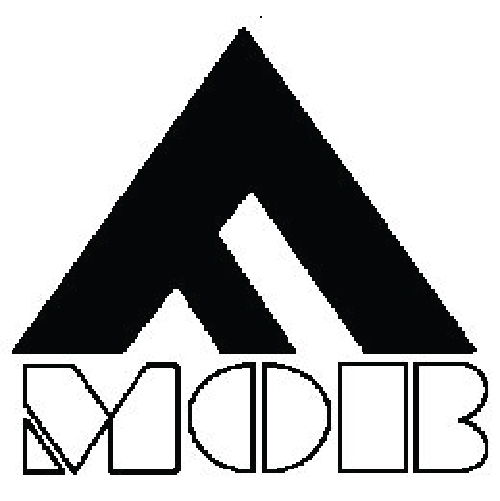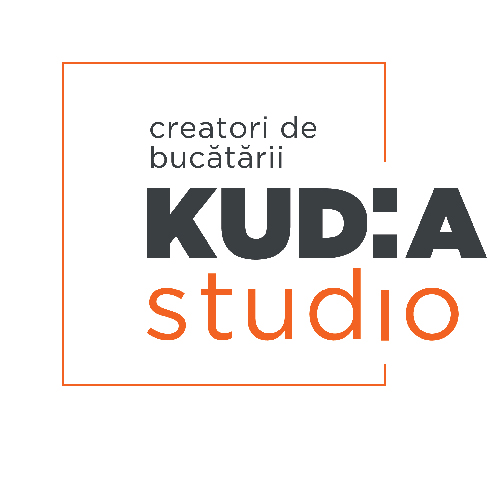Cookies themselves do not require personal information in order to be used, in most cases, does not personally identify internet users.
There is 2 large categories of cookies:
- Session cookies - they are temporarily stored in the cookies folder of the web browser so that it can store them until the user leaves the respective web-site or closes the browser window ( ex: when logging in / logging out on a webmail account or on social networks).
- Persistent cookies - These are stored on the hard drive of a computer or equipment (and generally depends on the default lifetime for the cookie). Persistent cookies also include those placed by a website other than the one the user is currently visiting - known as ‘third party cookies’. (cookies placed by third parties) - which can be used anonymously to memorize a user's interests, so that the most relevant advertising for the users is delivered.
What are the advantages of cookies?
A cookie contains information that links to a web browser (user) and a specific web server (website-ul).
If a browser accesses that web server again, it can read the information already stored and react accordingly. Cookies provide users with a pleasant browsing experience and support the efforts of many websites to provide comfortable services to users.: ex - online privacy preferences, site language options, shopping carts or relevant advertising.
What is the lifetime of a cookie?
Cookies are managed by webservers. The lifespan of a cookie can vary significantly, depending on the purpose for which it is placed. Some cookies are used exclusively for a single session (session cookies) and are no longer retained once the user has left the website and some cookies are retained and reused each time the user returns to that website ('Cookie-are permanent'). However, cookies can be deleted by a user at any time through the browser settings.
What are cookies placed by third parties?
Certain sections of content on some sites may be provided through third parties / providers (ex: news box, a video or an advertisement). These third parties may also place cookies through the site and they are called "third party cookies" because they are not placed by the owner of the website.. Third party providers must also comply with applicable law and the site owner's privacy policies..
How cookies are used by www.agricin.ro
A visit to this site may place cookies for purposes of:
- Site performance cookies
- Visitor analysis cookies
- Geotargetting cookies
- Registration cookies
- Advertising cookies
- Advertising provider cookies
Cookies may come from third parties:
Performance cookies
This type of cookie retains the user's preferences on this site, so you no longer need to set them every time you visit the site.
Example:
- volume settings for the video player
- the video streaming speed with which the Cookies browser is compatible for the analysis of visitors
Each time a user visits this site the analytics software provided by a third party generates a user analysis cookie.. This cookie tells us if you have visited this site before. The browser will tell us if you have this cookie, and if not, we will generate one. It allows monitoring the unique users who visit us and how often they do it.
As long as you are not registered on this site, this cookie cannot be used to identify individuals, they are used for statistical purposes only. If you are registered we can know, also, the details you provided us, such as e-mail address and username - these being subject to confidentiality and the provisions of the Terms and Conditions, Privacy policy as well as the provisions of the legislation in force regarding the protection of personal data.
Geotargetting cookies
These cookies are used by a software that determines which country you come from. It is completely anonymous and is only used to target content - even when you are on our page in Romanian or in another language you receive the same advertisement.
Cookies for registration
When you register on this site, we generate a cookie that notifies us if you are registered or not. Our servers use these cookies to show us the account you are registered with and if you have permission for a particular service.. Also, allows us to associate any comment you post on our site with your username. If you did not select "keep me registered", this cookie will be deleted automatically when you close your browser or computer.
Advertising cookies
These cookies allow us to find out whether or not you have viewed an online advertisement, what is its type and how long has it been since you saw the advertising message.
We also use these cookies to target online advertising. We can use, also, cookie- belonging to a third party, for better targeting of advertising, to show, for example, holiday advertisements, if the user recently visited an article on the holiday site. These cookies are anonymous, they store information about the content viewed, not about users.
Also, we also set anonymous cookies through other sites on which we advertise. Receiving them, so, we may use them to recognize you as a visitor to that site if you later visit our site, we will be able to deliver advertising based on this information.
Advertising provider cookies
Much of the advertising you find on this site belongs to third parties. Some of these parties use their own anonymous cookies to analyze how many people have been exposed to an advertising message., or to see how many people have been exposed to the same ad multiple times.
The companies that generate these cookies have their own privacy policies, and this site does not have access to read or write these cookies. Third-party cookies may be used to show you card advertising on other sites., based on your browsing on this site.
Other third party cookies
On some pages, third parties may set their own anonymous cookies, in order to track the success of an application, or to customize an application. Due to the way of use, this site cannot access these cookies, just as third parties cannot access the cookies held by this site.
E.g, when you share an article using the social media button on this site, that social network will record your activity.
What type of information is stored and accessed through cookies?
Cookies store information in a small text file that allows a website to recognize a browser. The webserver will recognize the browser until the cookie expires or is deleted. The cookie stores important information that improves the Internet browsing experience ( ex: the settings of the language in which you want to access a site; keeping a user logged in to the webmail account; online banking security; keeping products in the shopping cart)
Why cookies are important for the Internet?
Cookies are the focal point of the efficient functioning of the Internet, helping to generate a friendly browsing experience adapted to the preferences and interests of each user. Declining or disabling cookies may make some sites impossible to use.
Declining or disabling cookies does not mean that you will no longer receive online advertising - but only that it will no longer be able to take into account your preferences and interests., highlighted by the navigation behavior.
Examples of important uses of cookies ( which does not require a user to authenticate through an account):
Content and services adapted to user preferences - news categories, time, sport, maps, public and government services, entertainment sites and travel services.
Offers adapted to the interests of users - password retention, language preferences ( Ex: displaying search results in Romanian).
Retention of child protection filters on Internet content (family mode options, safe search functions).
Limit the frequency of ad serving - Limit the number of impressions of an ad for a specific user on a site.
Providing more user-relevant advertising.
Measurement, optimization and analytics features - such as confirming a certain level of traffic to a website, what type of content is viewed and how a user gets to a website (eg through search engines, direct, from other websites etc). Websites conduct these analyzes of their use to improve the sites for the benefit of users.
Security and privacy issues
Cookies are NOT viruses! They use plain text formats. They are not made up of pieces of code so they cannot be executed or auto-run. Consequently, cannot be duplicated or replicated on other networks to run or replicate. Because I can't perform these functions, cannot be considered viruses.
Cookies may, however, be used for negative purposes. Because it stores information about users' preferences and browsing history, both on a certain site and on several other sites- hate, cookies can be used as a form of Spyware. Many anti-spyware products are aware of this and constantly mark cookies to be deleted during anti-virus / anti-spyware deletion / scanning procedures..
In general, browsers have integrated privacy settings that provide different levels of acceptance of cookies, validity period and automatic deletion after the user has visited a certain site.
Other security issues related to cookies
Because identity protection is very valuable and represents the right of every internet user, it is advisable to know what possible problems cookies can create. Because through them, information is constantly transmitted in both directions between the browser and the website, if an attacker or unauthorized person intervenes during the transmission of data, the information contained in the cookie may be intercepted. Although very rarely, this can happen if the browser connects to the server using an unencrypted network (ex: an insecure WiFi network).
Other cookie-based attacks involve incorrect cookie settings on servers. If a website does not require the browser to use only encrypted channels, attackers can use this vulnerability to trick browsers into sending information through unsecured channels. Attackers then use the information to gain unauthorized access to certain sites. It is very important to be careful in choosing the most appropriate method of personal information protection. Tips for safe and responsible navigation, based on cookies.
Due to their flexibility and the fact that most of the most visited and largest sites use cookies, these are almost inevitable. Disabling cookies will not allow user access to the most widespread and used sites including Youtube, Gmail, Yahoo and others.
Tips that can ensure that you navigate without worries but with the help of cookies:
- Customize your browser settings for cookies to reflect a comfortable level of cookie security for you.
- If you do not mind cookies and you are the only person who uses the computer, you can set long deadlines for storing your browsing history and personal access data.
- If you share access to the computer, you can consider setting the browser to delete individual browsing data each time you close the browser. This is an option to access the sites that place cookies and to delete any visit information at the end of the browsing session..
- Install and constantly update your antispyware applications.
Many of the spyware detection and prevention applications include site attack detection. So, prevent your browser from accessing websites that may exploit browser vulnerabilities or download malicious software. Make sure your browser is always up to date. Many of the cookie-based attacks are exploited by exploiting the weaknesses of older versions of browsers.
Cookies are everywhere and cannot be avoided if you want to enjoy access to the best and largest sites on the Internet - local or international. With a clear understanding of how they operate and the benefits they bring, you can take the necessary security measures so that you can surf the internet with confidence.
How can I stop cookies?
Disabling and refusing to receive cookies may make certain sites impractical or difficult to visit and use.. Also, refusal to accept cookies does not mean that you will no longer receive / see online advertising.
It is possible to set in the browser so that these cookies are no longer accepted or you can set the browser to accept cookies from a specific site. But, e.g, if you are not registered using cookies, you will not be able to leave comments.
All modern browsers offer the ability to change cookie settings. These settings are usually found in the "options" or "preferences" menu..
To understand these settings, use the "help" option of your favorite browser.
IAB Romania provides the following site to provide more information on privacy related to online advertising: http://www.youronlinechoices.com/ro
If you disable these cookies, we will not be able to save your preferences. This means that each time you visit this site you will have to enable or disable cookies again.



















